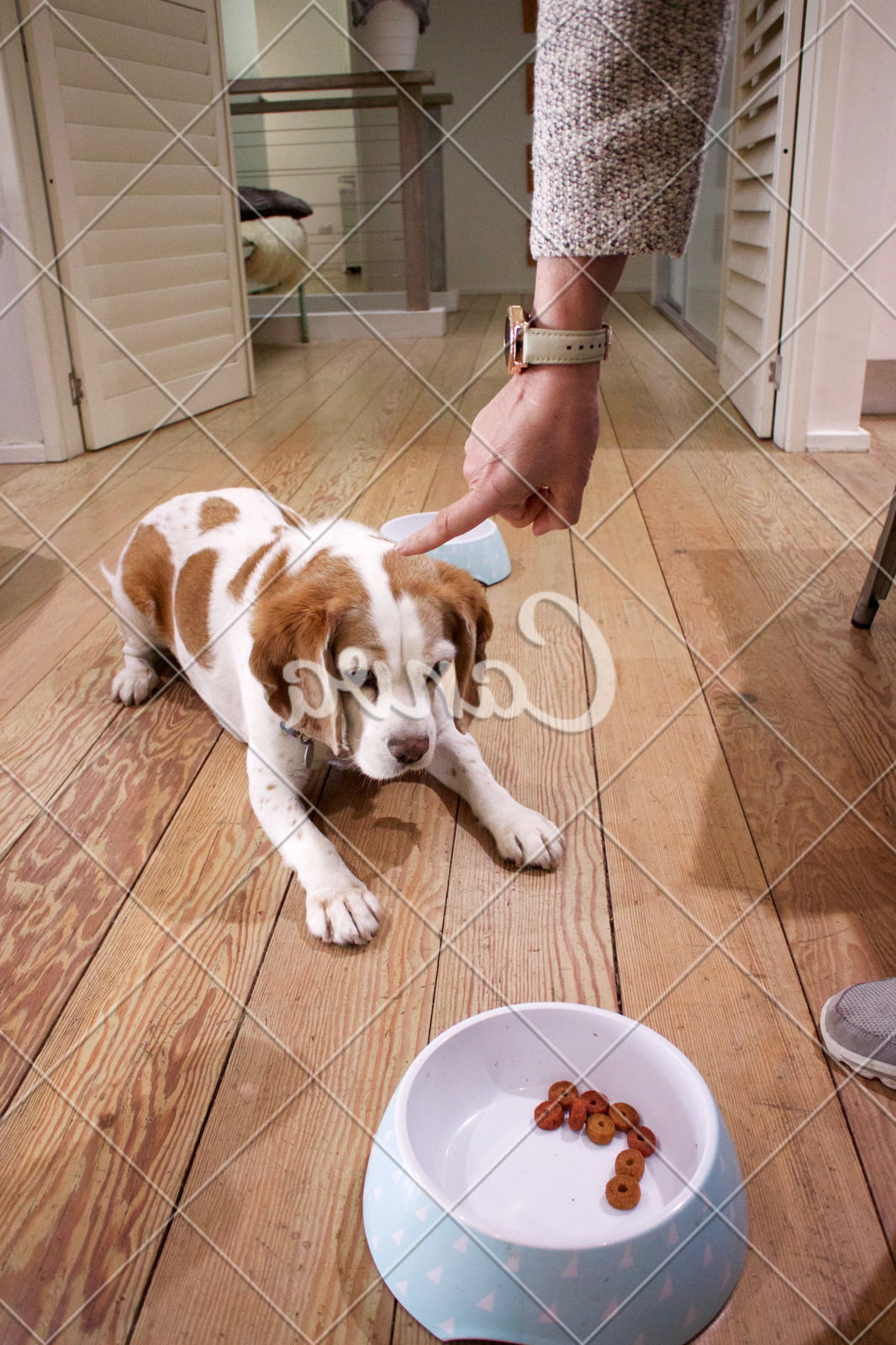Can you train a dog not to attack cats? Dogs attacking cats can be a distressing and dangerous situation for both pets and their owners. Understanding the root of this issue is crucial in addressing and resolving it effectively.
There are various reasons why dogs may display aggressive behavior towards cats, such as prey drive, fear, or territorial instincts. By recognizing these underlying causes, pet owners can take proactive steps to prevent such interactions and promote peaceful coexistence between their furry companions.
Assessing the dog’s behavior towards cats is essential in determining the severity of the issue and formulating an appropriate training plan. Signs to look for include growling, barking, chasing, or physical aggression towards cats. Recognizing these behaviors early on can help pet owners intervene before a serious incident occurs. The next step involves understanding whether it is possible to train a dog not to attack cats effectively.
Training plays a pivotal role in modifying a dog’s behavior towards cats. Positive reinforcement techniques have been proven to be effective in changing aggressive behaviors in dogs. By rewarding desired behaviors and redirecting negative ones, pet owners can teach their dogs to coexist peacefully with cats. However, consistency and patience are key when implementing training strategies to ensure long-term success in curbing aggressive tendencies in dogs towards cats.
Assessing the Dog’s Behavior Towards Cats
Observing Body Language
One of the first steps in assessing a dog’s behavior towards cats is to observe their body language when they are in the presence of felines. Dogs that are relaxed and friendly around cats will typically exhibit loose body movements, wagging tails, and ears in a neutral position.
On the other hand, dogs that may show signs of aggression towards cats might display stiff body posture, raised hackles, intense staring, growling, or barking. These visual cues can help you understand the initial reaction your dog has towards cats.
Testing Reactivity Levels
Another important aspect to consider when assessing a dog’s behavior towards cats is their reactivity levels. You can conduct controlled exposure sessions where you introduce your dog to a cat in a safe and managed environment. Observe how your dog reacts during these interactions – do they lunge towards the cat aggressively? Do they seem fearful or anxious? Understanding these reactions can provide insights into their comfort level and tolerance towards cats.
Previous Incidents or History
It is also crucial to consider any previous incidents or history your dog may have had with cats. If your dog has previously attacked or shown aggressive behavior towards cats, it may be an indicator of potential issues that need to be addressed through training. Additionally, understanding any triggers that may lead to aggressive behavior can help in devising strategies for modifying their response towards cats.
Importance of Training
When it comes to the question of whether you can train a dog not to attack cats, the answer is a resounding yes. While some dogs may have a natural prey drive or instinct to chase smaller animals like cats, with proper training and guidance, this behavior can be modified.
It is essential to understand that aggression towards cats can stem from various reasons such as fear, territoriality, or simply being overexcited. By addressing the root cause of the issue and implementing effective training techniques, you can teach your dog to coexist peacefully with feline companions.
To successfully train a dog not to attack cats, it is crucial to assess their behavior towards cats first. Look for signs such as staring intensely at cats, lunging or growling when they are nearby, or exhibiting predatory behaviors like chasing them. Understanding these cues will help in identifying triggers and developing a tailored training plan for your dog.
It is essential to remember that every dog is unique, so what works for one might not work for another. Patience, consistency, and positive reinforcement are key elements in modifying your dog’s behavior towards cats.
One effective method of training dogs not to attack cats involves using positive reinforcement techniques. This approach focuses on rewarding desired behaviors while ignoring or redirecting unwanted behaviors. By associating positive experiences like treats or praise with calm and non-aggressive interactions with cats, dogs can learn that peaceful coexistence leads to rewards.
Consistency in training, clear communication with your pet, and creating a safe environment are crucial components in ensuring successful behavior modification. Remember that seeking professional help from a certified dog trainer or behaviorist can also provide valuable guidance and support in this process.
Positive Reinforcement Training Techniques to Modify Dog Behavior
Understanding Positive Reinforcement
Positive reinforcement is a training technique that focuses on rewarding desired behaviors to encourage their repetition. When it comes to modifying a dog’s behavior towards cats, positive reinforcement can be a powerful tool. By rewarding your dog for calm and non-aggressive interactions with cats, you are reinforcing the desired behavior and creating a positive association with feline friends.
Training Exercises to Help Dogs and Cats Get Along
One effective exercise is desensitization, where you gradually expose your dog to the presence of cats in a controlled environment. Start by keeping the dog on a leash while allowing the cat to roam freely nearby. Reward the dog for staying calm and not reacting aggressively towards the cat. Over time, as the dog becomes more comfortable with the cat’s presence, you can increase their interactions under supervision.
Another helpful exercise is counter-conditioning, where you pair the sight or smell of a cat with something positive for the dog, such as treats or favorite toys. This helps change your dog’s emotional response from one of fear or aggression to one of positivity. With consistent practice and rewards, dogs can learn to associate cats with good things and curb their aggressive tendencies.
Seeking Professional Guidance
While positive reinforcement techniques can be effective in modifying your dog’s behavior towards cats, there may be instances where professional help is needed. A qualified dog trainer or behaviorist can provide guidance tailored to your specific situation, assess your dog’s behavior accurately, and develop a personalized training plan.
They can also offer support and expertise in addressing any underlying issues that may contribute to your dog’s aggression towards cats. Remember that seeking professional assistance early on can help ensure a successful outcome in training your dog not to attack cats.
Professional Help
When faced with the challenging task of training a dog not to attack cats, some pet owners may find it beneficial to seek the assistance of a professional dog trainer or behaviorist. These experts are trained to understand canine behavior and can provide valuable insights and guidance on how to address the issue effectively.
If you have tried various training techniques without success, or if you feel overwhelmed by the situation, it may be time to reach out for professional help.
A qualified dog trainer or behaviorist can assess your dog’s behavior towards cats and develop a customized training plan based on their findings. They can also provide hands-on training sessions and offer support and guidance throughout the process. Additionally, these professionals have experience working with different breeds and temperaments, allowing them to tailor their approach to suit your dog’s specific needs.
Seeking professional help is especially important if your dog’s aggression towards cats is severe or if there is a history of violent incidents. A skilled trainer or behaviorist can offer expertise in handling challenging cases and can ensure that both your dog and your cat are safe during the training process. Remember, it is always better to address aggressive behavior early on before it escalates into a more serious problem.
| Professional Help Benefits | Details |
|---|---|
| Expert Assessment | A professional can evaluate the root cause of the issue accurately. |
| Customized Training Plan | A tailored approach based on your dog’s specific needs. |
| Safe Training Environment | Ensuring safety for both your dog and cat during the training process. |
Creating a Safe Environment for Cats and Dogs to Coexist Peacefully
In addition to socialization, providing each pet with their own space within the home is crucial. Cats should have access to high places where they can retreat and feel safe, while dogs should have their own designated areas where they can relax without feeling the need to chase or confront the cat. Creating separate feeding stations and litter boxes for each pet can also help prevent potential conflicts over resources.
Furthermore, maintaining a structured routine for feeding, playtime, and exercise for both pets can contribute to a peaceful coexistence. Dogs thrive on consistency and predictability, so establishing clear boundaries and rules can help them understand what behavior is expected of them around the cat. Regular exercise not only promotes physical health but also helps release pent-up energy that could otherwise lead to chasing or aggression towards the cat.
| Key Aspect | Importance |
|---|---|
| Socialization | Develops positive associations and reduces aggression |
| Separate spaces | Ensures safety and comfort for each pet |
| Structured routine | Promotes predictability and establishes boundaries |
Monitoring Progress
When working on training a dog not to attack cats, it is essential to monitor the progress of the process. This helps in understanding whether the techniques being used are effective and if any adjustments need to be made. Here are some ways to track and evaluate the dog’s behavior improvement:
1. Keep a Behavior Journal: Maintain a journal where you can record any interactions between your dog and cats. Note down the reactions of your dog, whether positive or negative, towards the cats. This will help in identifying patterns in behavior and tracking any improvements over time.
2. Use Training Tools: Utilize tools such as clickers or treats during training sessions and observe how your dog responds to them. Monitor if there is progress in how your dog interacts with cats when these tools are used consistently.
3. Seek Feedback from Others: Ask family members or friends for their observations on the dog’s behavior around cats. Sometimes an outside perspective can provide valuable insights into changes that may not be immediately apparent.
By actively monitoring and evaluating your dog’s behavior improvement, you can gauge the effectiveness of the training methods being employed and make necessary adjustments to ensure a harmonious coexistence between your dogs and cats.
Remember, consistency is key in training, so stay patient and dedicated to achieving positive results over time. With proper monitoring and evaluation, you can train a dog not to attack cats successfully.
Consistency Is Key
In conclusion, the question of whether you can train a dog not to attack cats is a valid one, and the answer is yes. Understanding the root of the issue, assessing your dog’s behavior towards cats, and implementing positive reinforcement training techniques are all crucial steps in modifying your dog’s behavior. Consistency is key when it comes to maintaining these training results in the long term.
Creating a safe environment for both your cat and dog to coexist peacefully is essential. This includes providing separate spaces for each pet when needed, as well as closely monitoring their interactions. By consistently reinforcing positive behaviors and setting clear boundaries, you can help ensure a harmonious relationship between your pets.
Seeking the assistance of a professional dog trainer or behaviorist can also be beneficial if you are struggling to train your dog not to attack cats on your own. They can provide additional guidance, support, and expertise to help address any underlying issues that may be contributing to your dog’s behavior. Remember, with patience, dedication, and a commitment to training, you can successfully teach your dog not to attack cats and create a loving environment for all pets involved.

Welcome to the blog! I am a professional dog trainer and have been working with dogs for many years. In this blog, I will be discussing various topics related to dog training, including tips, tricks, and advice. I hope you find this information helpful and informative. Thanks for reading!





